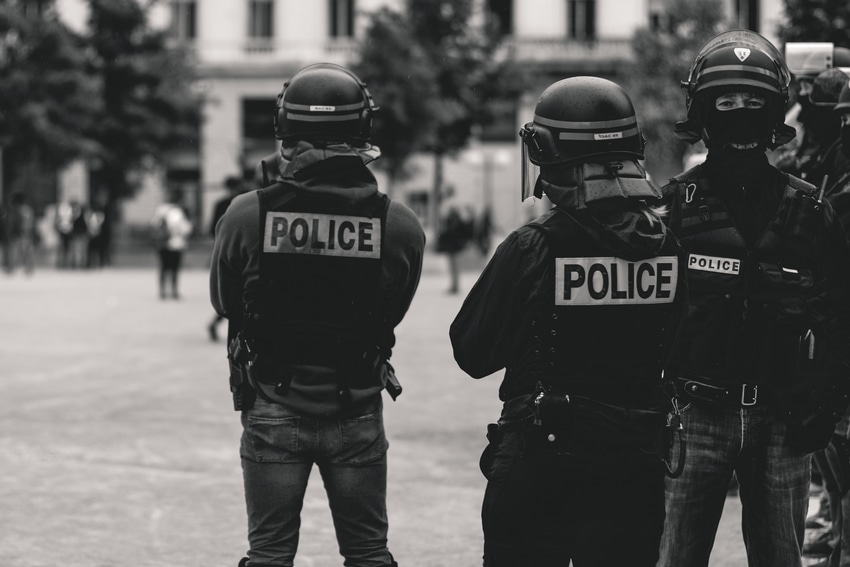
A Link Between Bond Reform and Social Unrest?
If you work in the bail bonding industry, you’ve long known what many others in Adams County, Broomfield County, Weld County and in other communities nationwide are just starting to grasp. Liberal-leaning bail bond reform – specifically, letting defendants stroll out of court on zero-dollar bail – isn’t what it’s cracked up to be. Arguments have gone something like this:
- “Hey, our jail is overcrowded, so let’s restrict the number of new inmates by letting defendants walk out of court without paying a dime…”
- “You know what? We take advantage of poor defendants too often! Let’s give them all a break! They don’t need to pay no stinking bail…”
Hastily enacted bail bond reform in New York, New Jersey, California, and Alaska seemed good put to paper, but did supporters actually think about potential consequences? Any honest person working in bail bonds - including our bail bonding team - will tell you that not all defendants we deal with are hardened criminals. While not all are destined to return to a life of crime, some will sadly enter a dangerous cycle of recidivism – especially if they leave court without any financial responsibility and limited resources. Does the name Tiffany Harris ring a bell? She basically gave a one-fingered salute to New York’s criminal justice system and went back to her old ways.
We’re also wondering the role of no-bail reform in recent outbreaks of social unrest following the tragic death of George Floyd.
Protests in New York
Prior to nationwide outbreaks of looting and riots after the May 25 killing of George Floyd proliferated to New York City and the state’s smaller cities, New York’s bail reform was betraying its law-abiding people. In New York City, the first month of 2020 experienced a 30 percent surge in crime compared to January 2019. In the first two months of 2020, 482 people were arrested for serious felony offenses, walked free without bail, and got arrested soon afterward for allegedly perpetrating another 846 new crimes — more than one-third serious felonies. As the new year crept into March, crime had gone up by double digits. The NYPD released an unequivocal statement: “Criminal justice reform serves as a significant reason New York City has seen this uptick in crime.” Basically, lawmakers had a fuzzy crystal ball to foretell the dangers, but ignored it even though the penalties were unnecessary.
So what’s happened in New York since Mr. Floyd’s death? Protests, riots, and looting. A bail bondsman recognizes the need for police reform, and the undeniable need to end systemic racism in America, but knee-jerk sentimentality which has led to no-bail reform laws has flamed fires that were already burning. On June 1, New York police reported that 650 protestors were arrested following violent rioting. Thanks to the state’s no-bail reform that went into effect January 1, 2020, most of those would be released – if they haven’t already, according to New York City police chief Terrence Monahan.
“This has been put in motion by our politicians that have allowed the criminal element to feel as if there’s no consequences for any crime that you do and now you’ve seen this coming out,” said Louis Turco, head of the NYPD Lieutenants Benevolent Association, in a statement to The Washington Post.
Protests Elsewhere
Less than 250 miles south in our nation’s capital of Washington, D.C., many protestors marched on the White House to make a statement about racism and police brutality. Sentiment got out of hand, of course, and it’s debatable if the violence was instigated by protestors or anti-protestors, but one thing’s for certain: “Nearly all rioters have been freed from jail in Washington, D.C. and most have had felony riot charges dropped against them, and now they are only facing burglary, destruction of property, and curfew violation charges,” as reported by the “journalists” at Breitbart.com.
Even without a specific no-bail reform law, a potentially significant number of rioters with criminal intent – and, perhaps, convicted of past crimes – are now back on the streets. What will bail bond reformers think about all of this? Who knows, but they may be stressed out right about now.
Thousands of miles away in California, hundreds of George Floyd-related protests have erupted – too many to count, actually – and there could be a link between mass social unrest, COVID-19, and that state’s proposed no-bond reform law, which is subject to a referendum in November. Some conservative media believe the protests and violence are more than happenstance.
“It’s no coincidence that some of the areas hardest hit by the rioting and the looting had also opened up their prisons to protect inmates from contracting the coronavirus. Despite apocalyptic predictions from policymakers and the media, there were no mass deaths in prisons or ICE detention facilities. But the critical mass of criminals out on the street left police in major cities hopelessly outnumbered.”
We can only hope these topics of concern are addressed thoughtfully, with an eye toward evolution for even recently passed no-bail reform laws.